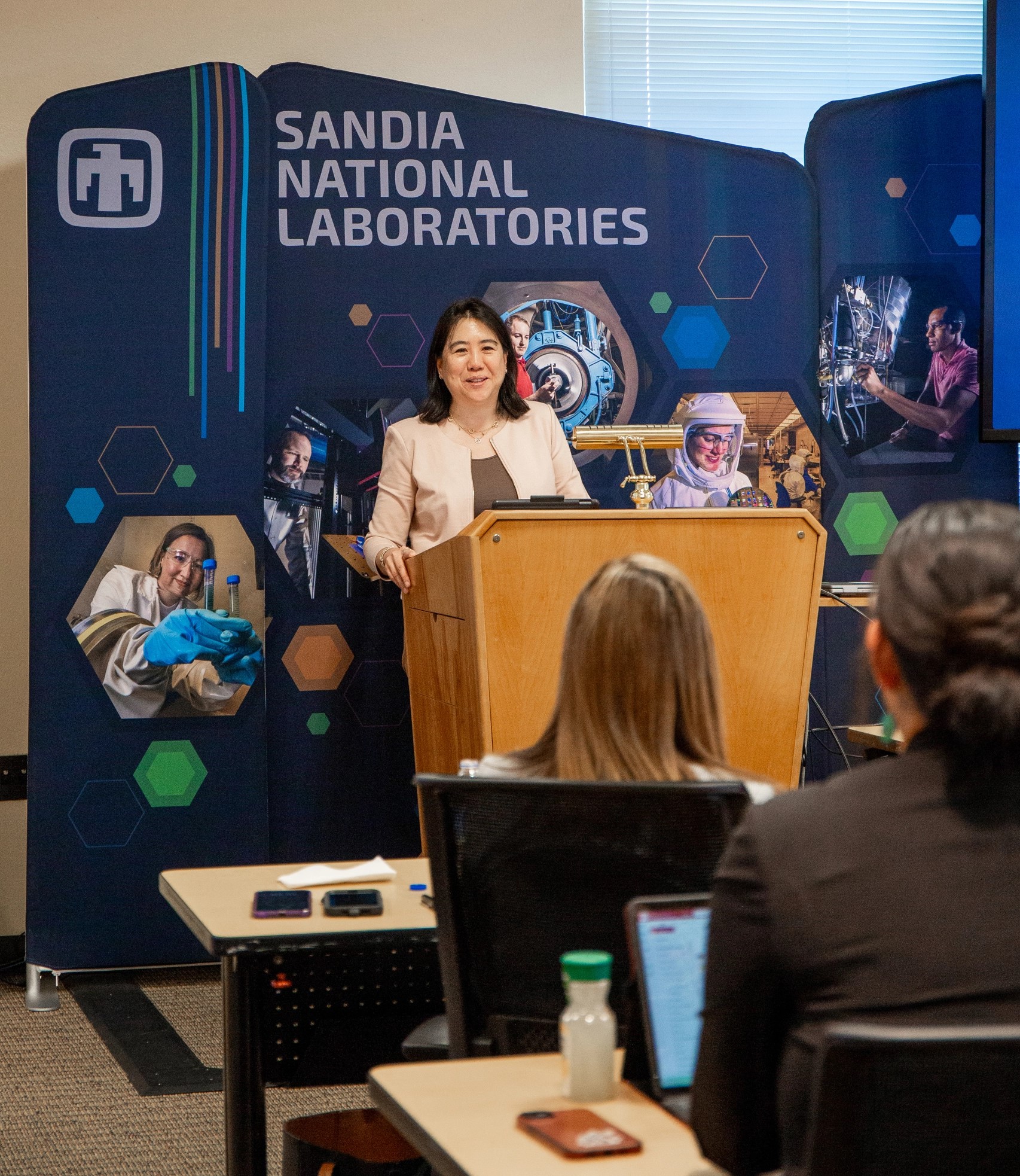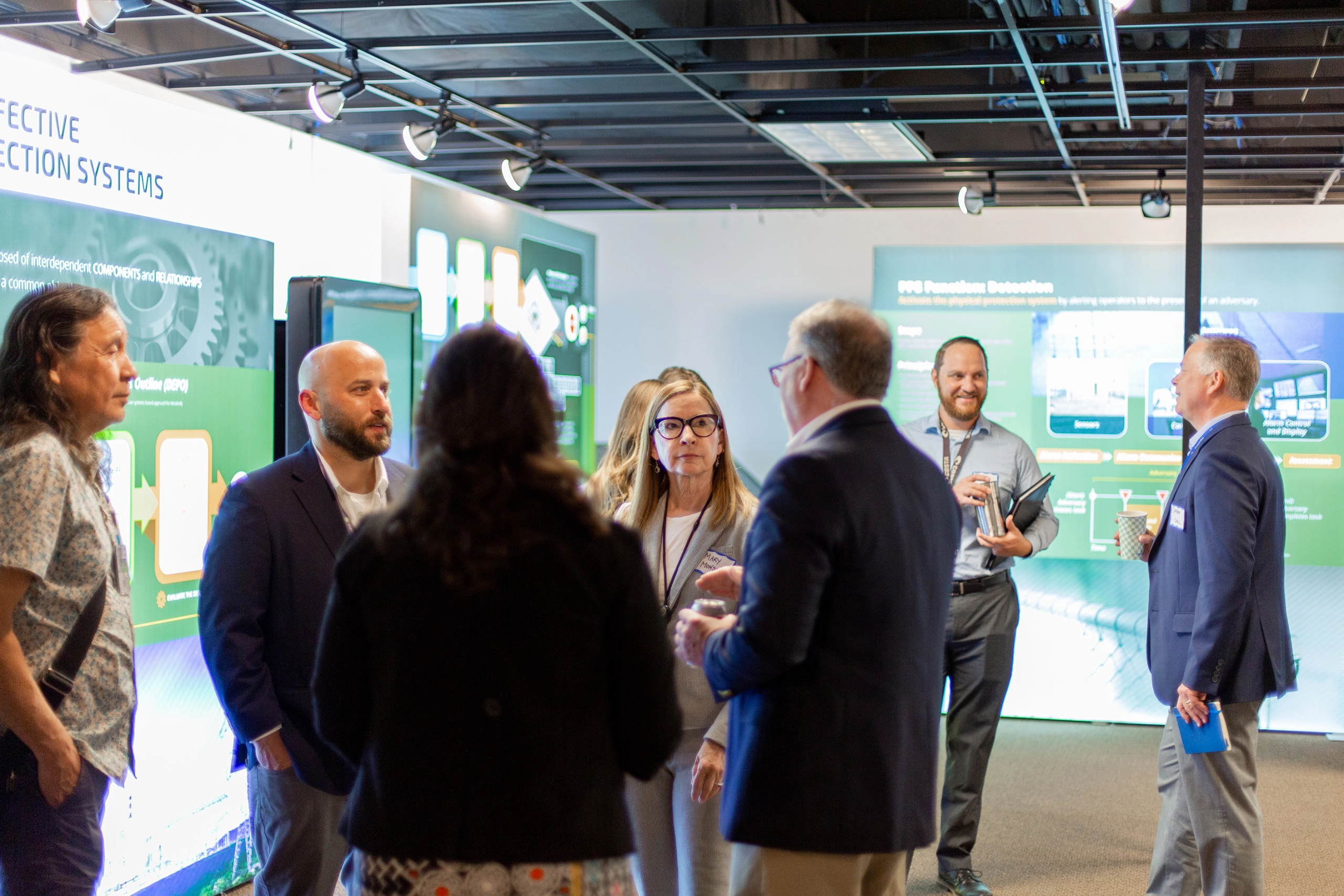
ALBUQUERQUE, N.M. — The Department of Energy’s Office of Technology Transitions has awarded $7.4 million to develop seven projects at Sandia National Laboratories aimed at advancing clean energy technologies.
Vanessa Chan, the Chief Commercialization Officer and director of DOE’s OTT office, announced the funding at an event in Albuquerque on June 17.
“The work you do here just blows my mind,” Chan said. “Other institutions have nothing compared to what you have here. So, we are here to help bring funding and unlock the potential of the labs. It’s one of the best tools for harnessing our lab intellect and opportunities.”
Each year Sandia submits multiple projects for consideration for funding by the DOE’s Office of Technology Transitions. This year, Sandia had 13 submissions totaling $16.9 million. The $7.4 million award represents a significant success for Sandia in its efforts to transfer technology out of the labs.
In total, DOE’s OTT announced $41.4 million in federal funding for 50 projects at 17 national laboratories to propel clean energy solutions. In the commercialization enabling/tech transfer projects category, Sandia was awarded more projects in fiscal year 2024 than any other national lab.
Impacting the economy and beyond
“These projects allow Sandia to have more of an impact on the local, regional and national economies,” said Mary Monson, Sandia’s senior manager for Technology Partnerships and Business Development. “The funding fosters close partnerships with industry and academia to implement innovative approaches and overcomes barriers for commercializing lab-developed technologies.”

This year’s funded projects include:
RAIICE: Rapid Artificial Intelligence Innovation Cycles for Energy aims to reduce the barriers to commercialization of lab-developed artificial intelligence and machine learning technologies within the clean energy sector. RAIICE will position the DOE enterprise as an accelerator of AI and machine learning innovation for clean energy advances and drive new technologies.
ACTION: Achieving Net Zero Through Innovative Technology Commercialization will help support the nation’s goal to reduce CO2 emissions to net zero. ACTION will build a sustainable, replicable model for commercializing DOE-developed technology by using DOE NetZero sites as proving grounds for innovative commercial technologies and deploying clean energy technologies to the market and Tribal lands.
Boost 2.0: A continuation of Boost 1.0, which brings national labs, startups, academia and DOE-developed technologies together to find solutions to community-based energy challenges. The Boost 2.0 platform will continue to provide a crucial service to DOE labs with the goal of commercializing 20 or more technologies, establishing 10 or more Cooperative Research and Development Agreement partners and 15 or more demonstrations.
Other funded projects focused on technical work through mechanisms such as Cooperative Research and Development Agreements:
Mobilizing under-utilized vessels for tidal energy capture: Many coastal communities in Alaska have untapped tidal or river energy and, in the offseason, many vessels sit idle. This corresponds to a period of high electrical demand, and for communities powered by traditional hydropower, low electrical power availability. During these times, these vessels can be used as floating energy making platforms by installing temporary, deployable tidal or river current energy capturing systems. Through partnerships with Sitkana and Hydrodynamic Power Systems, Sandia will assist with the design, operation and testing of these systems.
Industry-requested wind turbine model validation method using national laboratory measurement expertise: Wind turbine original equipment manufacturers rely on aeroelastic models of their turbines to design new products with both high performance and reliability. Recent fleetwide failures of turbine reliability at several large OEMs have exposed flaws in the modeling process and the corresponding model validation process. Recent efforts at Sandia have resulted in the development of a unique measurement capability that could work in service of the OEM model validation process.
Demonstration of a traveling wave-based protection scheme for distribution systems with high penetration of distributed energy resources: The project aims to pilot Sandia’s fast fault detection and location prototype using Traveling Waves for power distribution systems. That includes the need to de-risk the most pressing challenges for this technology’s viability and eventual commercialization. With this funding the project team will be able to address these risks on the path to market and identify future partnership and commercialization opportunities.
SolarSnitch: Cyber-physical, robust intrusion detection and mitigation for photovoltaic inverters: This project will help address a significant and emerging gap in power systems cybersecurity. A proactive intrusion detection and mitigation system named SolarSnitch, was developed by Sandia to secure grid-edge photovoltaic communications in distributed energy resource systems. Both cyber and physical data are automatically processed using custom machine learning algorithms to detect abnormal events and to correlate cyber-physical events. This project will help to further mature SolarSnitch and ready it for commercialization. Part of that process includes testing within realistic environments with project utility partners.